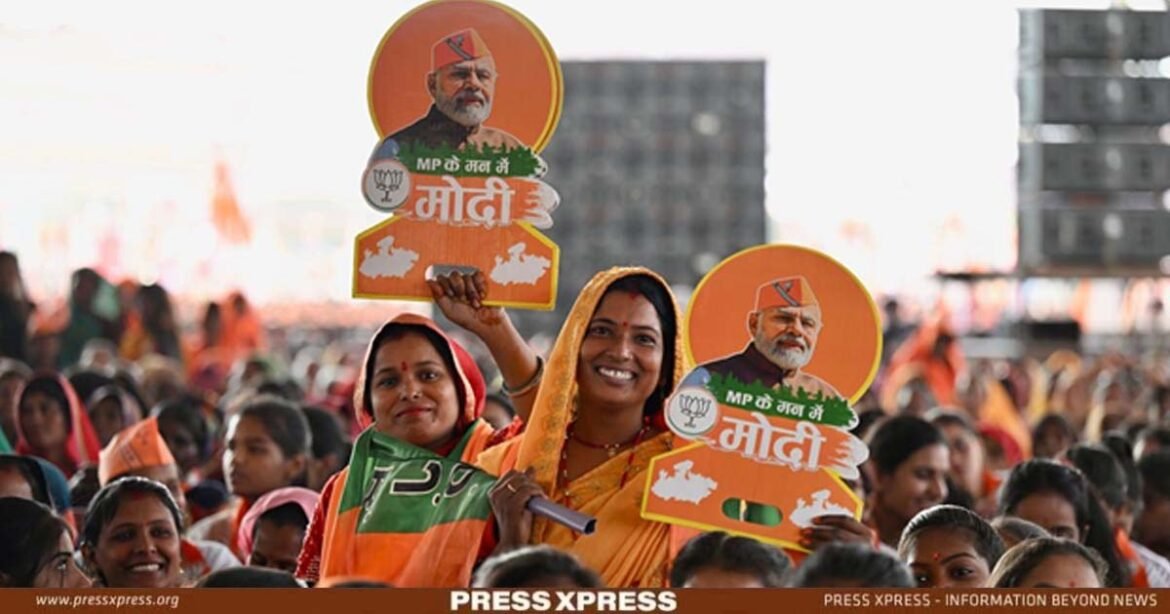The BJP’s welfarism is rooted in its core value of Antyodaya (no one is left behind), which guides its vision of inclusive development for all. This value was inspired by Deendayal Upadhyaya, a founding leader of the BJP, and is reflected in PM Modi’s slogan of ‘Sabka Saath, Sabka Vikas (with everyone, for everyone’s development)’.
Unlike the Congress and other opposition parties, which allegedly use the term ‘welfare’ as a bargaining chip for electoral gains, the BJP sees welfare as its dharma (religion) and its moral obligation to eradicate poverty and uplift the most vulnerable sections of society.
You can also read: Trump Warns NATO about Russia, Claims Ignored Warnings
Before 2014, millions of Indian households lacked basic services like electricity, water, sanitation, housing, and banking. But in the last ten years, the BJP has made big strides to ensure that every citizen, regardless of their caste, religion, gender, or political affiliation, can access the schemes they are entitled to.
BJP’s welfare schemes improved the vast population’s living standard. A recent International Monetary Fund report stated that India’s extreme poverty did not rise during and after Covid-19. This is because of the free grain distribution under the PM’s ‘Garib Kalyan Anna Yojana (Food Security Scheme for the Poor)’. The World Resources Institute’s study showed a drop in air pollution deaths, saving more than 150,000 lives every year.
Some of Modi’s welfare initiatives make India a welfare state. For example, the ‘Swachh Bharat Mission’ aims to end open defecation. The ‘PM Kisan Samman Nidhi’ program helps agriculture households to invest in their children’s education and nutrition.
What is Welfarism Under the Modi Government?
Welfarism under the Modi government is the term used to describe the welfare policies and programs initiated by Prime Minister Narendra Modi and his Bharatiya Janata Party (BJP) since 2014. These policies and programs aim to provide basic services and benefits to the poor and marginalized sections of society, such as electricity, water, sanitation, housing, banking, food, cooking gas, health insurance, and direct cash transfers.
Speaking at ET Global Business Summit on February 8, PM Modi who is seeking a straight third term, said that under his aegis the government elevated 250 million people out of poverty in the last 10 years. “When it comes to disruption, development, and diversification, everybody can agree that this is India’s time,” Modi voiced hope.
Calling India, a ‘raging bull,’ Narendra Modi said this is a welfare state. The government’s priority is to make the lives of the common citizens easier and improve the quality of life. “We invested not only in the present but also in the future of the country,” he asserted. Modi declared that India is ascending to unprecedented levels of progress, ensuring that the nation is on the path to becoming the world’s third-largest economy.
A Look at Some of the Welfare Initiatives
From Swachh Bharat Mission, Jan Dhan Yojana, Ujjwala Yojana to Ayushman Bharat Pradhan Mantri Jan Arogya Yojana, Startup India, to name a few, his historic decisions and policymaking ideas have weaved India into a newer outlook in front of the world- a strong developing nation. Narendra Modi has brought newer concepts to the limelight along with the notable schemes that have seeped into the deeper levels of the Indian societal structure- financial, healthcare, and social security.

In a nation, where according to Modi, a mere 15 paise out of ₹1 sent from Delhi reached the poor, the incumbent government has taken concrete steps such as shifting to direct benefit transfers (DBTs) to plug leakages in welfare provisioning. This focus on maximizing coverage is what makes the BJP’s model of welfarism distinct from those of other parties.
Under Modi’s initiative in recent years, more than 30 million families got a new home under the PM Awas Yojana program, 120 million farmers benefitted from the PM Kisan Samman Nidhi, 800 million have been receiving ration since the pandemic started, 450 million citizens opened their first bank account through the Jan Dhan Yojana, and 90 million households got their first LPG cylinder through the Ujjwala Yojana.
To name a few, Sansad Adarsh Gram Yojana (SAGY) promotes the social and cultural development of villages. It aims to realize Mahatma Gandhi’s vision of an ideal Indian village. Gramoday se Bharat Uday (GBU) focuses on the development of villages as the foundation of the country. Pradhan Mantri Garib Kalyan Anna Yojana (PMGKAY) provides free food grains to the poorest citizens through the Public Distribution System (PDS).

Atal Pension Yojana, (APY) provides a monthly pension for people from the unorganized sector between 18 to 50 years. PM Ujjwala Yojana, (PMUY) has delivered more than 9 Crore free LPG connections to BPL families at subsidized rates. Pradhan Mantri Street Vendor’s Atmanirbhar Nidhi scheme, (PMSVA Nidhi Scheme) helped to improve the life standard of the street vendors. Pradhan Mantri Awas Yojana (PMAY) constructed more than 3 Crore houses and provided them at an affordable price to the deprived section of the country. PM Jan Arogya Yojana, (PMJAY) provides Rs. 5 Lakhs per family per year for free and quality healthcare services to vulnerable families. Today almost every household in India has a water facility and this is due to the Jal Jeevan Mission under which 50% of households have a water connection.
These initiatives over the years have played a vital role in promoting the welfare of the poor people, empowering women, aiding the farmers, creating job opportunities, upskilling people, and thereby ameliorating the Indian economy at large. These flagship programs have moved way beyond the statistics and the positive impact of them could be seen on the smiling faces of people.
How Strong is India’s Economy Under Narendra Modi?
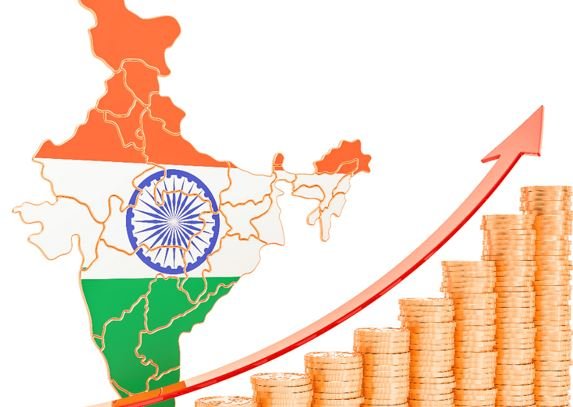
“India is a new ray of hope in an uncertain world,” Modi said recently while speaking at Gujarat Global Summit, one of many events where India wooed global investors.
Despite global growth slowing from 2.6% to 2.4% in 2024, India is booming. Its economy grew by 7.6% in the year to the third quarter of 2023, beating most forecasts. Economists expect annual growth of 6% or more for the rest of the decade. Investors are optimistic.
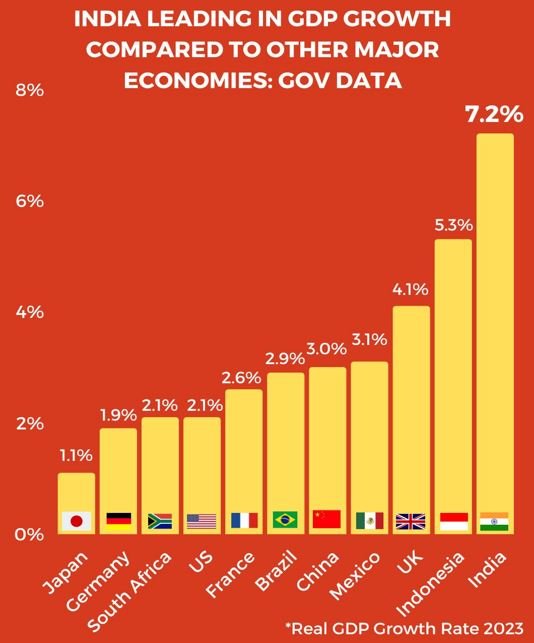
This year, 9000 million Indians will choose their future leader and Modi is expected to win a third term as many Indians see him as the best manager of the world’s one of the largest economies. But why?
India has grown faster than most emerging economies, but its labor market is weak and its private-sector investment is low. But that is changing for Modi’s flagship initiatives.
India’s GDP per person has grown by 4.3% per year under Modi, lower than the 6.2% under Manmohan Singh, his predecessor. This slowdown was due to the bad situation he inherited. In the 2010s a twin balance-sheet crisis hit banks and infrastructure firms. They had bad debt, which hurt investment for years. Modi also faced slowing global growth and covid-19. India still outperformed 20 other large lower- and middle-income economies.
Modi has formalized the economy by drawing activity out of the shadow economy and into the formal sector. He did this by demonetizing high-value notes and building digital public infrastructure. The poverty rate fell from 19% in 2015 to 12% in 2021.
Modi has also made doing business easier by passing a national goods and services tax (GST), which created a national single market. Modi has also invested in physical infrastructure, such as roads and bridges. Public investment rose from 3.5% in 2019 to nearly 4.5% in 2022 and 2023.
The results are visible. In 2023 net revenues from GST exceeded those of the old system, even as tax rates fell. This suggests that the economy is formalizing.
Modi wants to industrialize the economy, not just formalize it. He launched a subsidy scheme for products made in India and pledged funds for semiconductor plants. Some incentives could attract new industries and foreign investors. Foxconn and Micron are examples of firms that have invested in India.
But these projects are not enough to boost manufacturing. Its share of GDP and exports has stagnated. Industrial policy is costly and protectionist. The government pays most of the cost of the Micron plant and raises tariffs on foreign inputs.
Private-sector investment has been slow, but economists opine that this may pick up. A report by Axis Bank says that healthy bank and corporate balance sheets could spur the investment cycle. New investment projects by private firms reached $200bn in 2023, the highest in a decade. Firms also want to diversify from China. Modi’s reforms could lift growth and his reputation.
Welfare Schemes in Budget 2024
Modi government’s key schemes such as MGNREGA, Pradhan Mantri Awas Yojana, Ayushman Bharat, Mission Shakti, and PM Gram Sadak remained in focus in the interim budget 2024. With employment creation and tepid rural demand as some of the key challenges facing the government, Budget 2024-25 outlined its priorities for a crucial election year.
MGNREGA
MGNREGA, or the Rural Employment Guarantee Scheme has continued to be a significant part of India’s social security system. The scheme was allocated Rs 60,000 Cr in FY 24, with the revised estimate coming in at 86,000, Rs 86,000 was allocated for the scheme for FY 24-25, the election year.
The scheme provides a legal guarantee for at least 100 days of wage employment to every rural household whose members do unskilled manual work.
Pradhan Mantri Awas Yojana
The scheme was launched in 2015 with the promise to provide affordable homes to urban poor and rural homeless by 2022. The scheme was allocated Rs79,590 cr in FY 24, the revised estimate for the scheme fell to 54,103 cr and 80,671 cr has been allocated for FY 24-25. The scheme has two components PMAY (Urban) and PMAY (Gramin)-with the focus on promoting affordable housing for all through subsidies.
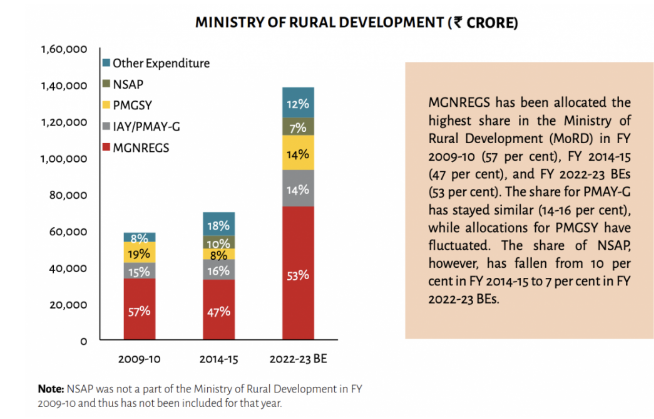
Ayushman Bharat

Government’s flagship health scheme, launched in 2018 aims to provide health insurance coverage to 500 million underprivileged citizens -making it one of the world’s largest government-funded healthcare programs. The scheme provides a cover of up to Rs 5 lakh rupees per family per year for secondary and tertiary care hospitalization across public and private empaneled hospitals in India. It was allocated 7200 cr for FY 23-24, the revised budget estimates for FY 24-25 are Rs 6881.
Mission Shakti
Women continue to be the centerpiece of PM Modi’s policymaking, launched in 2020, the scheme is focused on empowering women and ensuring their safety and dignity. The scheme includes several initiatives -including One Stop Centers to support women affected by violence.
Mission Shakti has seen its allocation nearly double from Rs1912 cr in 2020-21 to Rs3143 in 2023-24, revised estimates came in at Rs 2326. For fiscal year 2025, Rs 3146 cr has been allocated.
Jal Jeevan Mission
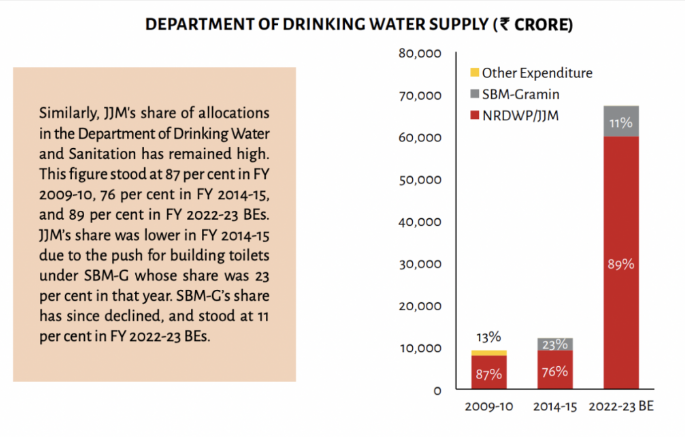
A flagship project of the Modi government is to provide safe and adequate drinking water through individual tap connections by 2024 to all households in rural India. Launched on August 15th, 2019, the scheme is a crucial step towards achieving the United Nations’ Sustainable Development Goal which aims to ensure access to water and sanitation for all. The scheme was allocated Rs70,000 Cr, the revised estimates are at 70,000 Cr, and for FY 25, Rs 70,163 has been allocated.
Final Words
Narendra Modi’s welfare scheme is a set of policies and programs launched by the Modi government in 2014. The scheme aims to provide basic services and benefits to the poor and marginalized sections of society, such as electricity, water, sanitation, housing, banking, food, cooking gas, health insurance, and direct cash transfers. The scheme is based on the principle of Antyodaya (no one is left behind), which was inspired by the BJP’s founding leader Deendayal Upadhyaya. The scheme also seeks to formalize the economy, improve the ease of doing business, and boost manufacturing. The scheme has reduced poverty, increased public investment, and attracted foreign investors. However, the scheme has also faced criticism for being costly, protectionist, and neglecting important areas such as health and education.

